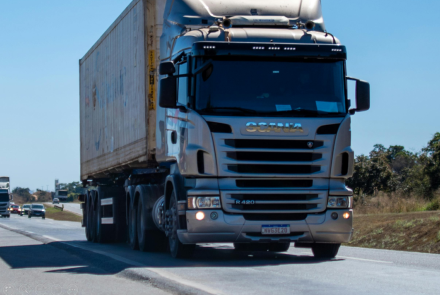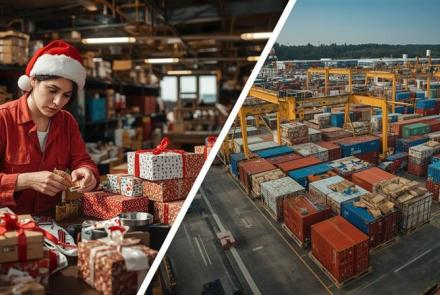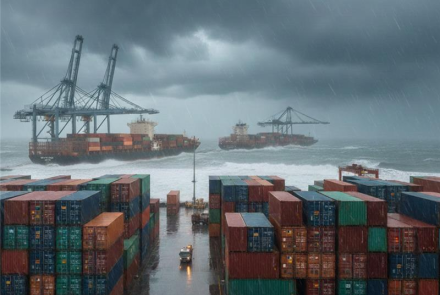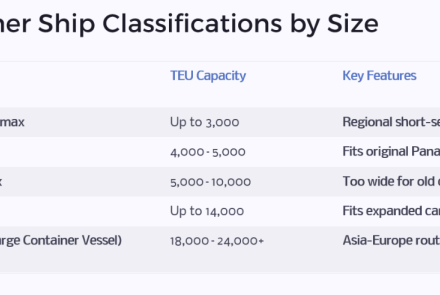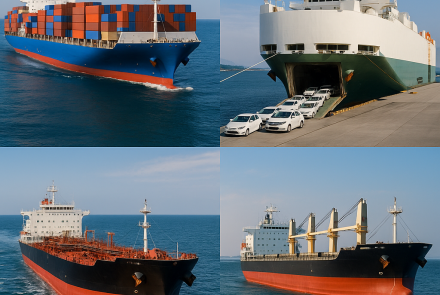SHIPPING ROUTES AND THE CHALLENGE OF REPOSITIONING EMPTY CONTAINERS
 The shipping industry forms the backbone of global trade, facilitating the movement of goods across continents and oceans. While it plays a pivotal role in connecting economies, it also faces numerous challenges that demand innovative solutions. One of the most pressing issues confronting the shipping industry is the repositioning of empty containers from low demand to high demand locations. Here, we will explore the routes undertaken by shipping vessels and delve into the complexities of managing container logistics in the face of empty returns.
The shipping industry forms the backbone of global trade, facilitating the movement of goods across continents and oceans. While it plays a pivotal role in connecting economies, it also faces numerous challenges that demand innovative solutions. One of the most pressing issues confronting the shipping industry is the repositioning of empty containers from low demand to high demand locations. Here, we will explore the routes undertaken by shipping vessels and delve into the complexities of managing container logistics in the face of empty returns.
Routes in the Shipping Industry
Shipping routes are the carefully planned pathways taken by cargo vessels to transport goods from their point of origin to their intended destinations. These routes can be categorized into major maritime trade lanes that link major economic hubs across the globe. The most prominent routes include:
Trans-Pacific Route
Connecting Asia with North and South America, this route is crucial for the transportation of goods between the world's largest economies.
Asia-Europe Route
Bridging Asia and Europe, this route facilitates substantial trade between two vital regions.
Trans-Atlantic Route
Linking Europe, North America, and South America, this route serves as a vital conduit for intercontinental trade.
Intra-Asia Route
This extensive network connects various Asian countries, supporting the region's flourishing trade.
Indian Ocean Route
Connecting Africa, the Middle East, and South Asia, this route is vital for the transportation of goods in and out of the Indian subcontinent.
The Challenge of Empty Container Repositioning
While shipping containers are indispensable to the global supply chain, ensuring their efficient and timely return to high-demand locations poses a big challenge for the industry. Containers are often filled with goods at their point of origin and shipped to their destination. However, once unloaded, the return of these containers to regions with high demand becomes problematic for several reasons:
Trade Imbalance
Global trade often results in an imbalance between import and export volumes among different countries. Regions with higher import volumes experience a surplus of empty containers, while regions with high export volumes face a shortage.
Operational Inefficiencies
Inefficiencies in container management, poor planning, and inadequate coordination between shipping companies and stakeholders can lead to imbalanced container flows.
Economic Factors
Fluctuating economic conditions in different regions can impact the demand for goods, further exacerbating the issue of empty container returns.
Regulatory Hurdles
Import and export regulations, customs clearance delays, and documentation requirements can contribute to delays in container return.
Infrastructure Limitations
Limited container handling facilities and transportation options in certain areas can hinder the swift return of empty containers.
Consequences of Empty Container Backhaul
The empty return of containers has several adverse effects on the shipping industry and the global supply chain
Increased Costs
Shipping companies incur additional expenses for the return of empty containers, which can ultimately lead to higher freight costs for consumers and businesses.
Environmental Impact
Empty container backhauls result in increased carbon emissions and resource wastage, as vessels sail without fully utilizing their capacity.
Equipment Shortages
Regions experiencing container shortages may face delays in cargo shipments and difficulties in meeting demand.
Congestion at Ports
Inefficient container returns can lead to port congestion, resulting in delayed vessel turnarounds and reduced overall shipping efficiency.
Solutions and Future Outlook
Addressing the challenges of empty container returns requires collaboration between shipping companies, governments, and other stakeholders in the supply chain. Some potential solutions include:
Improved Communication
Enhancing communication and data-sharing between different entities in the shipping industry can lead to better container management and planning.
Regional Redistribution Centres
Establishing redistribution centres in regions with surplus containers can help facilitate their return to areas facing shortages.
Intermodal Transport
Utilizing various modes of transportation, such as rail and road, can optimize container movement and reduce empty returns.
Predictive Analytics
Implementing advanced analytics and AI-driven forecasting can aid in predicting container demand and optimizing their distribution.
Incentive Schemes
Offering incentives to encourage the timely return of empty containers can motivate stakeholders to participate in more efficient container management practices.
The shipping industry plays a crucial role in connecting the global economy, but it faces significant challenges, including the complex issue of empty container returns. By acknowledging the trade imbalances and operational inefficiencies that contribute to this problem, stakeholders can work together to implement innovative solutions that promote sustainability and efficiency within the shipping industry. Through collaborative efforts and forward-thinking strategies, the industry can overcome the conundrum of empty container backhauls and continue to thrive in an ever-evolving global marketplace.
VS&B Containers offers a wide variety of containers, encompassing both newly built and used, and custom-built units that can be directly shipped from our manufacturing facilities to your preferred destinations across the world. We also operate a lease fleet of over 30,000 containers for both international leasing and domestic leasing (within India). If you have container requirements, do drop us an email at enquiry@vsnb.com and a member of our team will reach out to assist you.
Furthermore, iInterchange Systems (A VS&B group company) provides state-of-the-art software solutions tailored specifically to meet the needs of container shipping and logistics enterprises. Do visit www.iinterchange.com or drop us an email at sales@iinterchange.com for more details.
- Log in to post comments


